|
 Secure Site
Secure Site
|
 |
Archive for the 'Meditation Timers' Category
 The Zen Alarm Clock transforms mornings, awakening you gradually with a series of gentle acoustic chimes Once you use a Zen Clock nothing else will do - KOITSU -- Full Moon at Akashi Beach If you’re tossing and turning and having trouble getting a good night’s sleep, you may want to consider meditation, researchers suggest.
People with primary insomnia reported that they slept better after trying meditation, according to a new study to be presented June 9 at SLEEP, the annual meeting of the Associated Professional Sleep Societies, in Seattle.
Primary insomnia is described as difficulty getting to sleep or staying asleep over a time period of at least one month, according to the U.S. National Institutes of Health.
While most insomnia occurs along with another physical or mental illness or disorder, or as a side effect of medications or other substances, primary insomnia occurs on its own.
In the study, researchers divided 11 participants aged 25 to 45 with chronic primary insomnia into two groups. One group participated in Kriya Yoga — a form of meditation that helps an individual focus internalized attention and can reduce arousal — as well as health education.
The other group received information about improving health through exercise, nutrition, weight loss and stress management but did not participate in meditation.
After two months, the meditation group reported improvements in sleep quality, how long it took to get to sleep, total sleep time, total wake time, sleep efficiency and depression, the researchers reported.
Primary insomnia is believed to be a problem of hyperarousal, with high levels of arousal noted 24 hours a day, said lead study author Dr. Ramadevi Gourineni, director of the insomnia program at Northwestern Memorial Hospital in Evanston, Ill.
“Results of the study show that teaching deep relaxation techniques during the daytime can help improve sleep at night,” Gourineni said in a news release from the American Academy of Sleep Medicine.
 Wake up refreshed, love your alarm clock, transform your mornings with The Zen Alarm Clock's progressive awakening with gentle chimes. About 9.4 percent of U.S. residents, or an estimated 20 million people, try meditating during a 12-month period, according to a 2007 study by the National Center for Complementary and Alternative Medicine. People reported using meditation for various health problems, including anxiety, pain, depression, stress and insomnia.
A 2007 review of the scientific literature found some evidence that meditation is associated with health benefits, possibly by causing heart rate and breathing to slow, improving blood flow and reducing activity in the sympathetic nervous system (the body’s fight-or-flight mechanism).
Boulder, Colorado—an innovative company has taken one of life’s most unpleasant experiences (being startled awake by your alarm clock early Monday morning), and transformed it into something to actually look forward to. “The Zen Alarm Clock,” uses soothing acoustic chimes that awaken users gently and gradually, making waking up a real pleasure. Rather than an artificial recorded sound played through a speaker, the Zen Clock features an alloy chime bar similar to a wind chime. When the clock’s alarm is triggered, its chime produces a long-resonating, beautiful acoustic tone reminiscent of a temple gong. Then, as the ring tone gradually fades away, the clock remains silent until it automatically strikes again three minutes later. The frequency of the chime strikes gradually increase over ten-minutes, eventually striking every five seconds, so they are guaranteed to wake up even the heaviest sleeper. This gentle, ten-minute “progressive awakening” leaves users feeling less groggy, and even helps with dream recall.
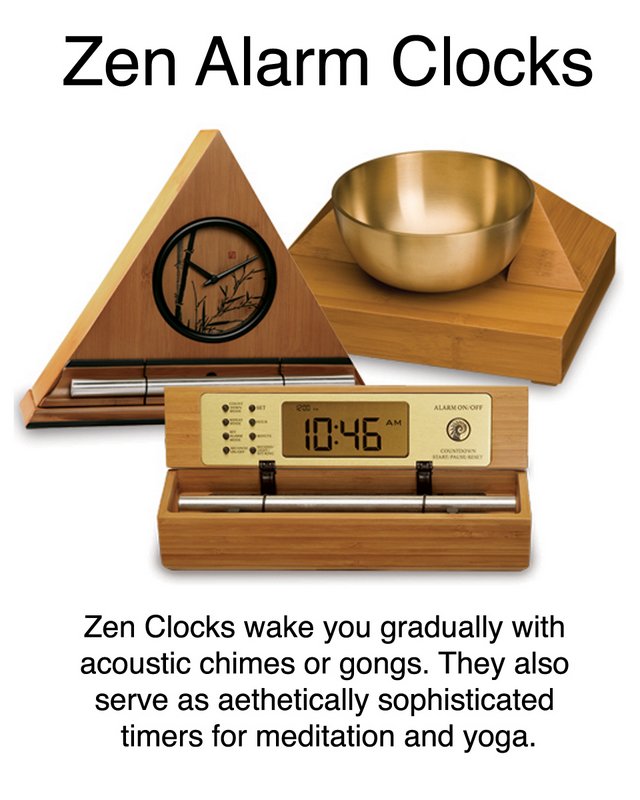 Wake up refreshed, love your alarm clock, transform your mornings with The Zen Alarm Clock's progressive awakening with gentle chimes. More information
The National Center for Complementary and Alternative Medicine has more on meditation and health.
Posted in Bamboo Chime Clocks, Meditation Timers, Meditation Tools, mindfulness practice
 Utamaro Portrait of the Courtesan Shirotama of the Tamaya 1790 Now & Zen has created a unique wellness gifts that will delight that someone special. The Zen Alarm Clock® and The Digital Zen Alarm Clock® are lifestyle timepieces that really impact people’s lives — they provide a gentle and gradual awakening with Tibetan bell-like acoustic chimes. But more than alarm clocks, these products also serve as aesthetically beautiful timers for practices such as yoga, bodywork, and meditation.
Zen Alarm Clocks are an aesthetic accouterment to almost any wellness practice. We have been featured in many mainstream media outlets including Good Morning America, GQ Magazine, The New York Times, American Spa, and The L.A. Times. These beautiful personal timers are a perfect wellness gift.
We have sold over 100,000 of our original triangular-shaped Zen Clocks (and sales continue to grow every year largely through word-of-mouth), and our Digital Zen Alarm Clocks (winner of the Denver Business Journal’s Most Innovative New Consumer Product Award) are continuing to be the favorite in independent retail channels nationwide.
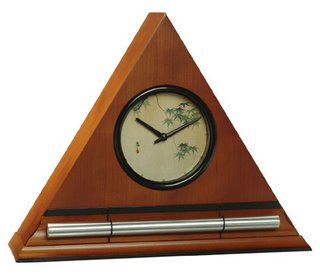 Japanese Leaves Zen Alarm Clock by Now & Zen, Inc. Now & Zen’s Wellness Alarm Clocks and Timers Store
1638 Pearl Street
Boulder, CO 80302
Posted in Japanese Inspired Zen Clocks, Meditation Timers, Meditation Tools, Natural Awakening, Now & Zen Alarm Clocks, Progressive Awakening
 The beauty and functionality of the Zen Clock/Timer makes it a meditation tool that can actually help you "make time" for meditation in your life. “Attentional-blink” occurs when two pieces of information are presented to a person in very close succession, and the brain doesn’t perceive the second piece of information because it is still processing the first. Richard Davidson and colleagues attempted to determine if intensive mental training through meditation could extend the brain’s limits on information processing, reducing “attentional-blink.”
The researchers compared two groups of people—17 expert meditators and 23 novices—to see if either was better at recognizing two pieces of information shown in quick succession.
The participants were tested at the beginning and end of a 3-month period. For the intervening 3 months, the meditation practitioners participated in a retreat, during which they meditated for 10-12 hours a day. The novices participated in a 1-hour meditation class, and were asked to meditate for 20 minutes a day for the week before each test.
The researchers found that intensive training did reduce “attentional-blink.” The participants who had gone through the mental training were more likely to perceive both pieces of information instead of just the first because the brain used fewer resources to detect the first piece of information—leaving more resources available to detect the second. The researchers also note that this study supports the idea that brain plasticity, or the ability of the brain to adapt, exists throughout life.
Use our unique “Zen Clock” which functions as a Yoga & Meditation Timer. It features a long-resonating acoustic chime that brings your meditation or yoga session to a gradual close, preserving the environment of stillness while also acting as an effective time signal. Our Yoga Timer & Clock can be programmed to chime at the end of the meditation or yoga session or periodically throughout the session as a kind of sonic yantra. The beauty and functionality of the Zen Clock/Timer makes it a meditation tool that can actually help you “make time” for meditation in your life. Bring yourself back to balance.
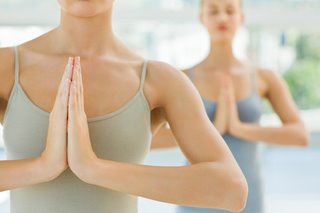 The beauty and functionality of the Zen Clock/Timer makes it a meditation tool that can actually help you "make time" for meditation in your life. Bring yourself back to balance. adapted from National Center for Complementary and Alternative Medicine
 - “Mindfulness” is the spiritual practice of being aware of your present moment.
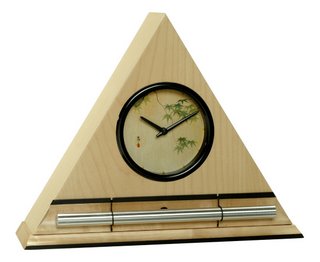 It features a long-resonating acoustic chime that brings your meditation or yoga session to a gradual close, preserving the environment of stillness while also acting as an effective time signal. Now & Zen
1638 Pearl Street
Boulder, CO 80302
(800) 779-6383
orders@now-zen.com
Posted in Bamboo Chime Clocks, Meditation Timers, Meditation Tools, mindfulness practice
 It's exquisite sounds summon your consciousness out of your meditative state with a series of subtle gongs. Meditation is easy in theory but fiendishly difficult in practice—unless you can give your mind a vehicle for moving inward.
There are decisive moments in the flow of every meditation session—moments of transition that either sustain the momentum of practice or impede it. One of these occurs early in the meditative process, soon after relaxing the body and making it comfortable. At this point the mind naturally begins looking for a more subtle focus to carry it inward. What will that focus be?
In yogic meditation, the answer is breath awareness. Breath awareness relaxes muscles and organs, calms the nervous system, and centers the mind. It sets the stage for a profoundly penetrating concentration, and ushers in a sense of peace and well-being. Breath awareness is to meditation what good lighting is to fine photography—not its final goal, but indispensable nonetheless. Meditation unfolds through breath awareness.
The art of breath awareness is more elaborate than most of us suspect. Breathing is an organic process, and its natural sensations result from the interaction of many elements—lungs, muscles, nerves, heart, and mind. In the early moments of meditation, breath awareness means bringing the rhythmic movements of respiration into awareness, then observing and shaping them. The more tuned we are to these natural sensations of breathing, the more effortless breathing becomes.
As time passes, breath awareness shifts to the relationship between breathing and the nervous system. These two are closely linked and respond to one another like best friends. When nerves are upset, breathing is affected; when breathing relaxes, so does the nervous system.
Finally, the flow of breathing is coordinated with the repetition of a mantra, relaxing and focusing the mind. Thus breath awareness becomes a means of using the breath as a support for concentration.
Let’s look at each of these three phases more closely.
 It features a long-resonating acoustic chime that brings your meditation or yoga session to a gradual close, preserving the environment of stillness while also acting as an effective time signal. Becoming the Witness
If you direct your attention to your breath, what exactly will you feel? Which sensations are the key to breath awareness? Pervading all the sensations of breathing is the experience that exhalation is cleansing, carrying away fatigue and tension; and that inhalation is nourishing, drawing in fresh energy. Observe this repeatedly. As time passes, each time you inhale, you will be able to sustain your awareness of the breath flowing in; each time you exhale, you will feel the breath flowing out. Firmly attach your awareness to these natural rhythms of breathing and you will notice a marked improvement in your concentration.
Once you are well connected to these rhythms, pay attention to the movements of your torso in more detail. These movements reflect the selection of muscles you are using to move air in and out of the lungs. The mechanics of breathing vary, depending on the posture of your body. If you are lying down on your back, you will feel the abdomen rise and fall. But if you are sitting erect, abdominal movements are much less noticeable. Instead, with each inhalation the ribs flare to the side, with only modest expansion of the upper abdomen. Exhalation is primarily a process of releasing muscle contractions and allowing the lungs to shrink to their normal size, although you may feel the abdominal muscles mildly contracting at the end of each breath.
Sit comfortably erect, close your eyes, and examine your breathing. Find the pace that feels natural and well suited to you. Relax the muscles of the abdominal wall all the way around to the spine in the back. Then let the sides of the rib cage expand laterally with each inhalation. Although there will be little movement in the front of the chest, don’t let yourself become bound by “rules” against chest breathing. Stick to the relaxed experience of breathing, and feel the natural expansion and contraction of your body with each breath.
As you continue, begin to weave one breath into the next. Don’t hurry—simply let the transitions from breath to breath be smooth and relaxed. Extended pauses in the breath distract the mind and disturb the nervous system. When these pauses are eliminated, each breath will satisfy you, and each will come at precisely the right moment.
After a comfortable and unhurried period of working with the breath (perhaps five or six minutes), the next step is to relax all effort. Breathing is normally effortless. It flows automatically, at the periphery of awareness. During meditation, you can return to effortless breathing, yet maintain awareness at the same time. To do this, continue resting your attention on the sensations of breathing, and at the same time, relax every mental effort. Your body breathes, and your mind relaxes. You are the transparent observer of your own breathing.
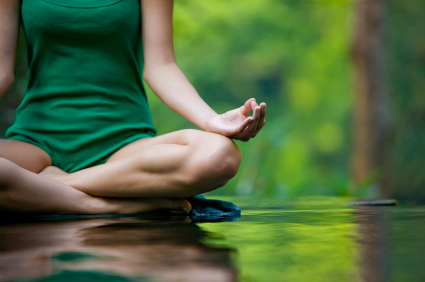 Our Yoga Timer & Clock can be programmed to chime at the end of the meditation or yoga session or periodically throughout the session as a kind of sonic yantra. Breathing is influenced by a variety of factors. Pleasant and unpleasant emotions, stress, pain, and even everyday movements alter the way we breathe. Laughter, for example, is a unique form of breathing. So are sighs, sobs, and the sharp inhalations that mark moments of sudden anxiety. Stress can have deep-acting effects, embedding itself in the fabric of the breath. Efforts to defend against chronic pain often restrict breathing, while intense pain may make the breath wildly erratic. Even bending over to tie your shoes can distort the movements of your breath.
Because the muscles of respiration are skeletal muscles, they can be controlled voluntarily. This means that you can make adjustments in breathing, reversing or at least relieving some of the effects caused by stress, pain, and negative emotions. That is one of the aims of breath awareness—the restoration of deeply relaxing patterns of breathing.
Ultimately, however, breath awareness is not so much about correcting breathing patterns as restoring the ability to witness them. Watching the breath comes naturally with a modest amount of practice. Once you are able to simultaneously relax your breathing and observe it, breath awareness will introduce you to deeper levels of yourself.
Calming the Nervous System
Painful thoughts, negative emotions, and stressful reactions inevitably arise during meditation. Having become rooted in the mind, they emerge in our practice. As we have seen, breath awareness gives us the ability to meet these distractions with less reactivity. The key is to feel the tension between relaxed breathing and these negative influences, and to choose (remember, breathing can be voluntary) to maintain a steady, relaxed flow of breath when meeting them. Even a little disturbed breathing is enough to get your heart racing and nerves tingling. Conversely, the ability to preserve relaxed breathing reestablishes a sense of self-acceptance and self-control. This calms the nervous system and creates a shift toward inner balance. It also brings us back into the present moment rather than allowing us to become enmeshed in images of the past or fantasies about the future.
Suppose, for example, that during meditation the thought of a painful work conflict arises. This thought reflects an entire array of associations, emotions, and behaviors (perhaps you’ve been avoiding meeting with a colleague for some time now). Here in meditation, nonetheless, it’s just you and your thought—meeting on the plains of your mind. The conflict will need to be worked out, no doubt, but to do that effectively may mean living with it for a time. How can breath awareness help?
The cost of stressful reactions is that they give negativity a foothold in the nervous system, which is then translated into unpleasant symptoms. During meditation, breath awareness short-circuits this translation process. It does not eliminate the conflict, but helps prevent it from taking up residence. When breathing remains relaxed and a steady focus of attention, problems are not so easily oversold to the nervous system and are less likely to overwhelm us.
Breath awareness is associated in yoga with a particular function of the mind, a function variously described as the ability to be the inner witness of experience, to remain detached in the face of discomfort, and to act decisively. Breath awareness helps create distance between this observing self in us (the buddhi in Sanskrit) and our distresses. It does not suppress conflict, but helps us recognize that conflict is not the ultimate truth of experience. Therefore, practices like breath awareness that help awaken the buddhi are particularly strengthening.
Quieting the Mind
In its final stages, breath awareness leads to a profound meditative experience. It fortifies and deepens your concentration. This is accomplished in two steps: through the sensation of the breath moving within the nostrils, and the coordination of the breath with a sound or mantra.
When the focus is on the breath flowing within the nostrils, the object of concentration is a sense experience (touch). When the breath is linked to the repetition of a mantra, it serves as a transitional device to bring the mind to a focus entirely within itself—a mental sound. Experienced meditators feel the breath in the nostrils and recite the sound of a mantra at the same time. In this way, concentration is firmly anchored.
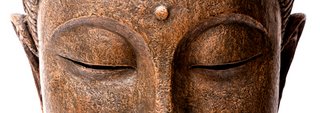 The beauty and functionality of the Zen Clock/Timer makes it a meditation tool that can actually help you "make time" for meditation in your life. Bring yourself back to balance. In the early stages of meditation (both in a particular meditation session and in the meditative learning process, in general), the mind is easily distracted. At that time, awareness of breathing acts like a set of training wheels on a bicycle. It allows the mind to focus, but remains ready to catch the mind if it loses its balance. The unbroken flow of breathing also prompts the mind to weave one mantra repetition into the next. As with the breath, when the sound of one mantra repetition ends, the next one begins.
With practice, the repetition of a mantra will supplant awareness of the breath. This is the inevitable direction of the meditation process. Yet slipping into the background of meditation, breathing will have performed many important functions. It is only after this work is complete that the mind turns further inward, resting in the pulsation of the mantra alone.
Use our unique “Zen Clock” which functions as a Yoga & Meditation Timer. It features a long-resonating acoustic chime that brings your meditation or yoga session to a gradual close, preserving the environment of stillness while also acting as an effective time signal. Our Yoga Timer & Clock can be programmed to chime at the end of the meditation or yoga session or periodically throughout the session as a kind of sonic yantra. The beauty and functionality of the Zen Clock/Timer makes it a meditation tool that can actually help you “make time” for meditation in your life. Bring yourself back to balance.
Rolf Sovik, PsyD, is co-author of Yoga: Mastering the Basics and is the director of the Himalayan Institute of Buffalo, New York.
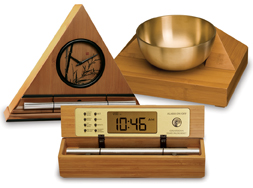 It's exquisite sounds summon your consciousness out of your meditative state with a series of subtle gongs. Once you experience the Zen Timepiece's progressive tones, you'll never want to meditate any other way. It serves as the perfect meditation timer. Available in 5 wood styles, including bamboo. Now & Zen – The Meditation Timer & Alarm Clock Store
1638 Pearl Street
Boulder, CO 80302
(800) 779-6383
orders@now-zen.com
Posted in Meditation Timers, Meditation Tools, mindfulness practice
 Use our unique "Zen Clock" which functions as a Yoga Timer. Relaxation Response: The relaxation response is a physical state of deep rest that changes the physical and emotional responses to stress (e.g., decrease in heart rate, blood pressure, and muscle tension). This technique is used by the Mind/Body Medical Institute in Chestnut Hill, Mass.
The technique involves sitting in a comfortable position and repeating a word, sound, phrase, prayer or muscular activity while passively disregarding the everyday thoughts that come into the mind so the practitioner can focus on the object of repetition. The institute suggests doing the response for 10 to 20 minutes at a time.
Transcendental Meditation: Popularized in the West by the Maharishi Mahesh Yogi, transcendental meditation involves sitting comfortably with the eyes closed for about 15 to 20 minutes, allowing the practitioner’s mind to enter a deeply relaxed state referred to as “Transcendental Consciousness.” The Maharishi Vedic Education Development Corp., which promotes the study of transcendental meditation, says the practice can increase a person’s creativity and productivity, improve health and reduce violence, among other benefits.
Yoga: A series of physical postures that connect the movement of the body with the breath. The poses are designed to purify the body, increase flexibility, calm the mind and provide physical strength and stamina required for long periods of meditation. There are many different kinds of yoga that range from more relaxing to more physically demanding, so people interested in practicing should find out beforehand what style of yoga is best for them.
Writing it Down: One technique recommended by Rabin involves taking 15 minutes to write down everything that’s bothering you. Don’t read what you’re writing or take time to proofread it, just write everything down, says Rabin. At the end of the 15 minutes, simply rip up the paper and throw it away. “It’s amazing the calming effect” this technique has, he says.
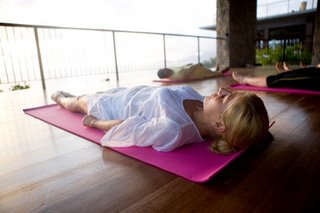 The beauty and functionality of the Zen Clock/Timer makes it a meditation tool that can actually help you "make time" for meditation in your life. Use our unique “Zen Clock” which functions as a Yoga & Meditation Timer. It features a long-resonating acoustic chime that brings your meditation or yoga session to a gradual close, preserving the environment of stillness while also acting as an effective time signal. Our Yoga Timer & Clock can be programmed to chime at the end of the meditation or yoga session or periodically throughout the session as a kind of sonic yantra. The beauty and functionality of the Zen Clock/Timer makes it a meditation tool that can actually help you “make time” for meditation in your life. Bring yourself back to balance.
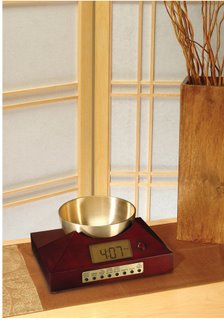 It features a long-resonating acoustic chime that brings your meditation or yoga session to a gradual close, preserving the environment of stillness while also acting as an effective time signal. Now & Zen – The Bowl/Gong Meditation Timer
1638 Pearl Street
Boulder, CO 80302
(800) 779-6383
orders@now-zen.com
Posted in Bamboo Chime Clocks, Meditation Timers, Meditation Tools, mindfulness practice
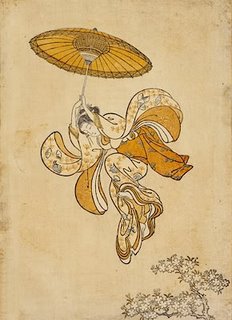 The beauty and functionality of the Zen Clock/Timer makes it a meditation tool that can actually help you "make time" for meditation in your life. Repeating a phrase can reduce your stress
Mumbling to yourself may not be as crazy as it seems. Repeating a mantra–a meaningful word or phrase said silently–can help you cope with the hassles of life, finds a new study from the Veterans Administration San Diego Healthcare System. In it, 66 volunteers were taught to repeat a mantra (sometimes called a mantram) of their choice as often as possible during low-stress activities such as washing dishes or getting ready for bed. The goal was to train their brains to associate the phrase with calmness so they could employ it to counter turmoil. Mantras varied: Some chose words or phrases with religious meanings, while others went secular–one golfer repeated fairways and greens.
Regardless of their choice, the returns were similar:
Six months later, 83% had employed their mantras to help them stay calm, and 75% were able to ease stress, frustration, and tension. “Mantras are a Jacuzzi for the mind,” says lead researcher Jill Bormann, PhD, RN. “And unlike many stress-reduction techniques, you can literally use this anywhere, anytime.”
 Meditation is generally an inwardly oriented, personal practice, which individuals do by themselves. Meditation may involve invoking or cultivating a feeling or internal state, such as compassion, or attending to a specific focal point. “Mindfulness” is the spiritual practice of being aware of your present moment. World famous Zen monk Thich Nhat Hanh has developed the use of a bowl-gong in a practice he calls the “mindfulness bell.” When you hear the sound of the mindfulness bell, you are invited to take a moment to breathe in and out and center yourself in the present. This practice allows the sound of the bowl-gong to periodically connect you to the peace and tranquility that resides inside you right now. This delightful practice reduces stress and improves your overall health.
The Zen Timepiece can serve as a mindfulness bell in two ways: it can be set to strike on the hour (providing an hourly moment of stillness), or it can be set to strike at a programmed interval, such as every 20 minutes, or even every three hours.
adapted from Prevention by By Rachel Meltzer Warren
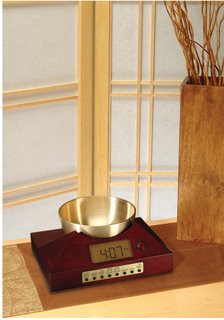 This unique "Zen Clock" features a long-resonating acoustic chime that brings the meditation session to a gradual close, preserving the environment of stillness while also acting as an effective time signal. Now & Zen – The Meditation Timer Shop – Timers & Clocks with Gentle Sounds
1638 Pearl Street
Boulder, CO 80302
(800) 779-6383
orders@now-zen.com
Posted in Meditation Timers, Meditation Tools, mindfulness practice
 “Mindfulness” is the spiritual practice of being aware of your present moment. Try This Technique: Body Scan (10 to 20 minutes)
Lie comfortably on your back, side, or stomach with your eyes closed. Beginning with the toes of your left foot, focus on any sensations (tingling, warmth) you feel there. Now imagine your breath traveling down to your toes, then back up and out through your nose. Slowly move up your left leg, focusing on the sensations you encounter and directing your breath to your ankle, shin, knee, and thigh. Repeat the sequence with your right leg, then move through your lower back, abdomen, upper back, chest, shoulders, and both arms. Next move to your neck, throat, face, the back of your head, and–finally–the top of your head. You should also take notice when you don’t feel any sensations at all.
adapted from Prevention, By Nicola Nieburg
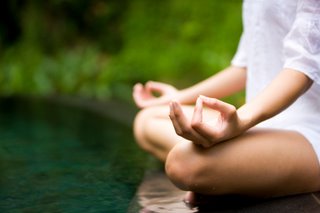 Mindfulness practice, is increasingly being employed in Western psychology to alleviate a variety of mental and physical conditions. Although meditation can be done in almost any context, practitioners usually employ a quiet, tranquil space, a meditation cushion or bench, and some kind of timing device to time the meditation session. Ideally, the more these accoutrements can be integrated the better. Thus, it is conducive to a satisfying meditation practice to have a timer or clock that is tranquil and beautiful.
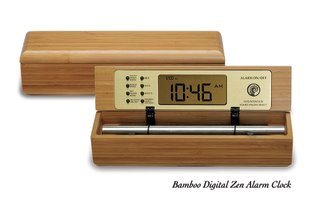 The beauty and functionality of the Zen Clock/Timer makes it a meditation tool that can actually help you "make time" for meditation in your life.
Using a kitchen timer or beeper watch is less than ideal. And it was with these considerations in mind that we designed our digital Zen Alarm Clock and practice timer. This unique “Zen Clock” features a long-resonating acoustic chime that brings the meditation session to a gradual close, preserving the environment of stillness while also acting as an effective time signal. The Digital Zen Clock can be programmed to chime at the end of the meditation session or periodically throughout the session as a kind of sonic yantra. The beauty and functionality of the Zen Clock/Timer makes it a meditation tool that can actually help you “make time” for meditation in your life.
Now & Zen – The Meditation Timer Store
 The beauty and functionality of the Zen Clock/Timer makes it a meditation tool that can actually help you "make time" for meditation in your life. Bring yourself back to balance.
1638 Pearl Street
Boulder, CO 80302
(800) 779-6383
orders@now-zen.com
Posted in Meditation Timers, Meditation Tools, mindfulness practice
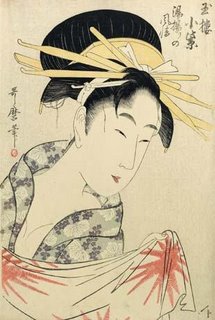 Kitagawa Utamaro, Komuraski of the Tamaya, House After a Bath, 1795 On June 22, I was invited to participate on National Public Radio’s The Diane Rehm Show along with Dr. Richard Davidson, NCCAM grantee at the University of Wisconsin-Madison, and Mr. Jonathon Foust, founder of the Mindfulness Training Institute in Washington, D.C. The topic was “The Power of Meditation.”
Meditation can take a variety of forms: mantra meditation, relaxation response, mindfulness meditation, Transcendental Meditation, and Zen Buddhist meditation, among others. Yoga and Tai chi also incorporate meditative components. Meditation practices are often rooted in spiritual practices, but many people practice meditation outside of a religious context. The 2007 National Health Interview Survey revealed that some 20 million U.S. adults use meditation for health purposes.
Meditation has been used for centuries to increase calmness and physical relaxation, improve psychological balance, cope with illness, and enhance overall health and well-being. The literature on meditation suggests that it is a very powerful tool for learning control of attention, regulating emotion, and increasing self-awareness or cultivation of the state called mindfulness. These insights are old. But what is new in the last 15 years or so is scientific data. These data show that during meditation there are a number of measurable biological changes—for example, in the autonomic nervous system—and the recognition that meditation has the potential to impact on mental and physical health. This is an area of scientific promise in mind-body medicine that NCCAM is supporting and welcoming continued exploration by our grantees.
There are many interesting challenges related to bringing science to the study of meditation. Modern neuroscience has increased the tools available for this research. It is now well established that the meditative state can be associated with changes in electrical function of the brain, and recent imaging studies suggest that there may actually be neuroanatomic changes as well. In particular, Dr. Davidson’s work on the effect of meditation on processing of attention and neuroplasticity is fascinating, as is hisexamination of meditation on immune and brain function. Challenges to this area of research include understanding how to set up adequate control and understanding the factors that determine how people actually incorporate the practice of meditation into their daily lives. These are study design challenges that need to be met so we may further explore the potential health benefits of this intriguing ancient human practice.
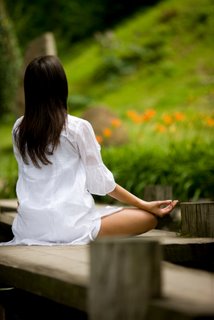 The beauty and functionality of the Zen Clock/Timer makes it a meditation tool that can actually help you "make time" for meditation in your life.
adapted from National Center for Complementary and Alternative Medicine by Dr. Josephine P. Briggs
Meditation is generally an inwardly oriented, personal practice, which individuals do by themselves. Meditation may involve invoking or cultivating a feeling or internal state, such as compassion, or attending to a specific focal point. The term can refer to the state itself, as well as to practices or techniques employed to cultivate the state. There are dozens of specific styles of meditation practice; the word meditation may carry different meanings in different contexts. Meditation has been practiced since antiquity as a component of numerous religious traditions. A 2007 study by the U.S. government found that nearly 9.4% of U.S. adults (over 20 million) had practiced meditation within the past 12 months, up from 7.6% (more than 15 million people) in 2002.
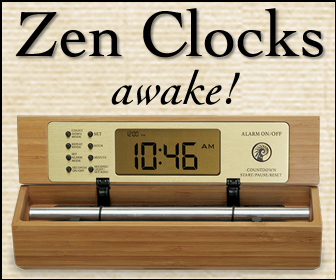 It's exquisite sounds summon your consciousness out of your meditative state with a series of subtle gongs.
Although meditation can be done in almost any context, practitioners usually employ a quiet, tranquil space, a meditation cushion or bench, and some kind of timing device to time the meditation session. Ideally, the more these accoutrements can be integrated the better. Thus, it is conducive to a satisfying meditation practice to have a timer or clock that is tranquil and beautiful. Using a kitchen timer or beeper watch is less than ideal. And it was with these considerations in mind that we designed our digital Zen Alarm Clock and practice timer. This unique “Zen Clock” features a long-resonating acoustic chime that brings the meditation session to a gradual close, preserving the environment of stillness while also acting as an effective time signal. The Digital Zen Clock can be programmed to chime at the end of the meditation session or periodically throughout the session as a kind of sonic yantra. The beauty and functionality of the Zen Clock/Timer makes it a meditation tool that can actually help you “make time” for meditation in your life.
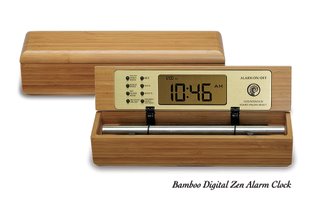 Our Yoga Timer & Clock can be programmed to chime at the end of the meditation or yoga session or periodically throughout the session as a kind of sonic yantra. The beauty and functionality of the Zen Clock/Timer makes it a meditation tool that can actually help you "make time" for meditation in your life. Bring yourself back to balance.
Now & Zen – The Meditation Timer Shop
1638 Pearl Street
Boulder, CO 80302
(800) 779-6383
Orders@now-zen.com
Posted in Bamboo Chime Clocks, Meditation Timers, Meditation Tools, mindfulness practice
 Hugs are Good For Your Heart Here’s some heart-healthy advice: Plan quality time with your honey.
In a 2003 study, researchers from the University of North Carolina told couples they would have to give speeches. But first, 100 of the couples sat together for 10 minutes, holding hands, then they embraced for 20 seconds. Another 85 couples rested quietly, separated from their partners.
During their speeches, heart rates and systolic blood pressure (the first number) rose twice as high in the no-contact group as it did for the hand-holding group.
“More intense and prolonged blood pressure responses to the stresses and strains of daily life create greater wear and tear on the body,” says study coauthor Karen Grewen, PhD. “Repeated episodes of positive contact and feelings of closeness may reduce the negative effects of life’s inevitable hassles on bodily systems.”
adapted from Prevention by By Kelly Stratton
 Waking up in the morning should be as pleasant as falling asleep at night. The Zen Alarm Clock's gradual, gentle awakening is transformative. Boulder, Colorado—an innovative company has taken one of life’s most unpleasant experiences (being startled awake by your alarm clock early Monday morning), and transformed it into something to actually look forward to. “The Zen Alarm Clock,” uses soothing acoustic chimes that awaken users gently and gradually, making waking up a real pleasure.
Rather than an artificial recorded sound played through a speaker, the Zen Clock features an alloy chime bar similar to a wind chime. When the clock’s alarm is triggered, its chime produces a long-resonating, beautiful acoustic tone reminiscent of a temple gong. Then, as the ring tone gradually fades away, the clock remains silent until it automatically strikes again three minutes later. The frequency of the chime strikes gradually increase over ten-minutes, eventually striking every five seconds, so they are guaranteed to wake up even the heaviest sleeper. This gentle, ten-minute “progressive awakening” leaves users feeling less groggy, and even helps with dream recall.
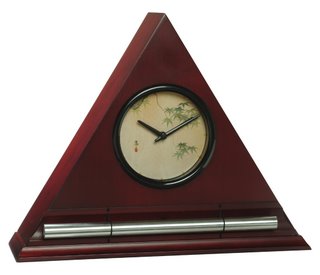 The Zen Alarm Clock transforms mornings, awakening you gradually with a series of gentle acoustic chimes Once you use a Zen Clock nothing else will do The Zen Alarm Clock transforms mornings, awakening you gradually with a series of gentle acoustic chimes Once you use a Zen Clock nothing else will do Now & Zen – The Gentle Sounding Alarm Clock Store
1638 Pearl Street
Boulder, CO 80302
(800) 779-6383
orders@now-zen.com
Posted in Meditation Timers, Meditation Tools, mindfulness practice
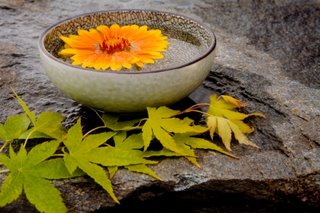 The beauty and functionality of the Zen Clock/Timer makes it a meditation tool that can actually help you "make time" for meditation in your life. Bring yourself back to balance. Simple Strategies to Strengthen Self Control
Witness the role of willpower in your daily life: From the moment the alarm sounds in the morning, it’s only by sheer determination that you rouse yourself from the warm sheets into the still-dark morning. You grit your teeth when the barista takes 6 minutes to fill your coffee order–never mind those $200 shoes you talk yourself out of buying or the fries you force yourself to leave on your plate at lunch. It’s no wonder that by the time 6 pm rolls around, you’re waging World War III on your husband for forgetting to pick up the milk on his way home. Again.
Our lives are full of temptations that tax our self-control and drain our willpower, but a new and growing body of research says you can make it through the day without losing your cool–and it isn’t as hard as you think. First, you need to realize that doing anything you don’t want to do–suppressing irritation at your mother-in-law, fighting an impulse to do something you shouldn’t, completing a task when you want to quit–draws on the same storehouse of willpower. But help is here: According to Roy Baumeister, PhD, director of social psychology at Florida State University, willpower functions like a muscle. It can be fatigued by overuse, but it can also be strengthened to make you more productive, less stressed, and happier. All you need are a few healthy habits to keep your willpower tank on full.
 Our Yoga Timer & Clock can be programmed to chime at the end of the meditation or yoga session or periodically throughout the session as a kind of sonic yantra. When Dr. Baumeister monitored workers in Germany, he was surprised to find that people spent between 3 and 4 hours per day resisting desires, the most common of which were urges to eat, sleep, take a break from work, and have sex. But Dr. Baumeister also found that people with strong self-control spent less time resisting desires than other people did. At first he was puzzled. If self-control is for resisting desires, why are people who have more of it using it less? Soon the explanation emerged: They’re better at proactively arranging their lives to avoid problem situations. These are the folks who take the car to the shop before it breaks down, give themselves enough time to finish a project, and steer clear of all-you-can-eat buffets. They play offense instead of defense–which means they set themselves up so they have a realistic chance of succeeding.
“Mindfulness” is the spiritual practice of being aware of your present moment. World famous Zen monk Thich Nhat Hanh has developed the use of a bowl-gong in a practice he calls the “mindfulness bell.” When you hear the sound of the mindfulness bell, you are invited to take a moment to breathe in and out and center yourself in the present. This practice allows the sound of the bowl-gong to periodically connect you to the peace and tranquility that resides inside you right now. This delightful practice reduces stress and improves your overall health.
The Zen Timepiece can serve as a mindfulness bell in two ways: it can be set to strike on the hour (providing an hourly moment of stillness), or it can be set to strike at a programmed interval, such as every 20 minutes, or even every three hours.
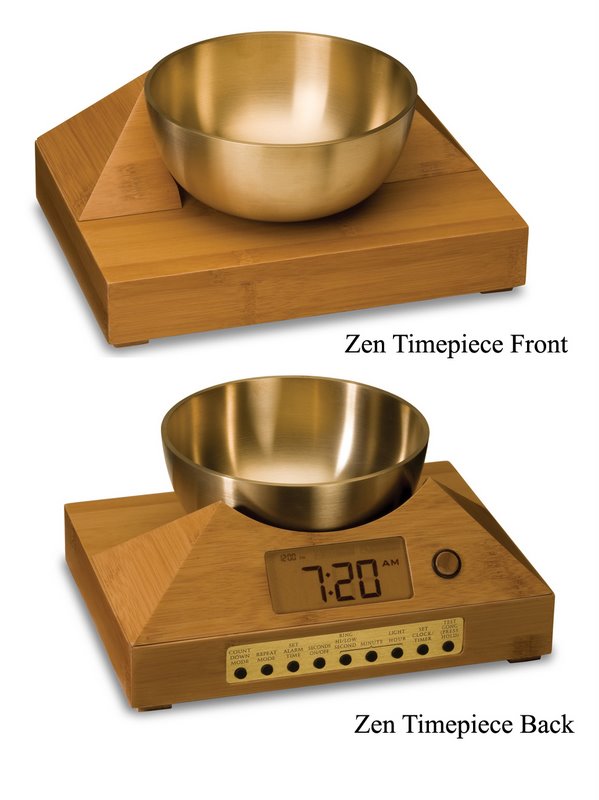 The beauty and functionality of the Zen Clock/Timer makes it a meditation tool that can actually help you "make time" for meditation in your life. Bring yourself back to balance. Now & Zen – The Gong Meditation and Alarm Clock Shop
1638 Pearl Street
Boulder, CO 80302
(800) 779-6383
orders@now-zen.com
Posted in Meditation Timers, Meditation Tools, mindfulness practice
« Previous Page — « Previous Entries
Next Entries » — Next Page »
|
|
|
|